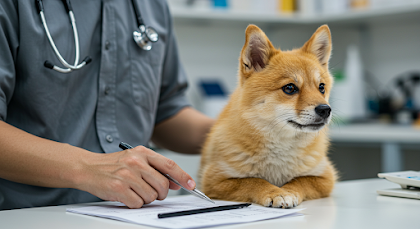How to Keep Your Pet Safe in Arizona’s Extreme Heat
Arizona’s scorching summers can be brutal, with temperatures often soaring above 100°F. For pet owners, this extreme heat poses significant risks to their furry companions. Dogs, cats, and other pets are highly susceptible to heatstroke, dehydration, and paw burns, making it critical to take proactive steps to ensure their safety. This article outlines practical strategies to protect your pet during Arizona’s sweltering months, keeping them cool, hydrated, and safe.
Understand the Risks of Extreme Heat
Pets, particularly dogs, are vulnerable to Arizona’s intense heat because they cannot regulate their body temperature as efficiently as humans. Breeds with thick fur, short noses (like bulldogs or pugs), or those with pre-existing health conditions are at higher risk. Heatstroke can set in quickly, with symptoms including excessive panting, drooling, lethargy, and vomiting. Paw pads are also prone to burns from hot pavement, which can reach temperatures exceeding 140°F. Recognizing these dangers is the first step to prevention. For expert advice, consult a trusted veterinarian like Dr. Kelly's Surgical Unit - North Phoenix, which specializes in pet care and emergency services.
Limit Outdoor Time During Peak Heat
The hottest part of the day in Arizona typically occurs between 10 a.m. and 4 p.m. During these hours, avoid taking your pet for walks or letting them play outside for extended periods. Instead, schedule walks for early morning or late evening when temperatures are cooler. If your pet must go outside, keep trips brief and stick to shaded areas. Grass or dirt paths are preferable to asphalt or concrete, which can burn paws. Test the ground with your hand—if it’s too hot for you to touch for a few seconds, it’s too hot for your pet.
Provide Ample Water and Shade
Hydration is critical in extreme heat. Ensure your pet has constant access to fresh, cool water, both indoors and outdoors. Consider adding ice cubes to their water bowl to keep it refreshing. If your pet spends time outside, provide a shaded area with good airflow, such as under a tree or a covered patio. Portable pet water bottles and collapsible bowls are great for walks or outings. Never leave your pet in a parked car, as the interior can reach deadly temperatures within minutes, even with windows cracked.
Protect Their Paws
Hot surfaces like sidewalks, roads, and even pool decks can cause severe burns to your pet’s paw pads. To prevent this, use pet booties designed for heat protection, which create a barrier between their paws and the ground. If booties aren’t an option, apply pet-safe paw balm to moisturize and protect their pads. Walk your pet on grass or dirt whenever possible, and check their paws after outdoor time for signs of burns, blisters, or abrasions. If you notice any damage, seek veterinary care immediately.
Create a Cool Indoor Environment
Your home should be a safe haven from the heat. Keep your pet indoors as much as possible, especially during heat advisories. Use air conditioning or fans to maintain a comfortable temperature. If you don’t have air conditioning, create a cooling station with damp towels, cooling mats, or a kiddie pool filled with shallow water for your pet to lie in. Freeze treats like peanut butter or broth in a toy to provide a refreshing activity that helps them stay cool.
Watch for Signs of Heatstroke
Heatstroke is a life-threatening emergency for pets. Symptoms include rapid breathing, bright red gums, vomiting, diarrhea, and collapse. If you suspect heatstroke, act quickly: move your pet to a cool area, offer small amounts of water, and wet their body with cool (not cold) water. Contact a veterinarian immediately, as prompt treatment can save their life. Keep emergency contact information handy and know the location of your nearest vet clinic for quick access.
Adjust Feeding and Exercise Routines
In extreme heat, pets may have reduced appetites or energy levels. Feed them smaller, more frequent meals to avoid digestive stress, and avoid heavy exercise during the day. Opt for indoor games like tug-of-war or puzzle toys to keep them mentally stimulated without overheating. For dogs that need physical activity, consider indoor facilities or short, low-intensity walks during cooler parts of the day.
Grooming and Sun Protection
Regular grooming helps remove excess fur, allowing better air circulation to keep your pet cool. However, avoid shaving double-coated breeds like huskies, as their fur provides insulation against heat. For pets with light-colored or thin fur, apply pet-safe sunscreen to exposed areas like the nose and ears to prevent sunburn. Wide-brimmed hats or cooling vests can also offer extra protection during brief outdoor time.
Plan for Emergencies
Arizona’s heat can lead to unexpected emergencies, such as power outages that disable air conditioning. Have a backup plan, such as a pet-friendly hotel or a friend’s house with cooling. Keep a pet emergency kit with water, food, medications, and first-aid supplies. Enroll in a pet first-aid course to learn how to handle heat-related issues. Knowing how to respond can make all the difference in keeping your pet safe.
By taking these precautions, you can protect your pet from Arizona’s extreme heat and ensure they stay healthy and happy all summer long. Stay vigilant, prioritize their comfort, and consult a veterinarian for personalized advice tailored to your pet’s needs.
Name: Dr. Kelly's Surgical Unit - North Phoenix
Address: 4727 E Bell Rd #11, Phoenix, AZ 85032
Phone: (602) 641-4861
.jpg)


Comments
Post a Comment